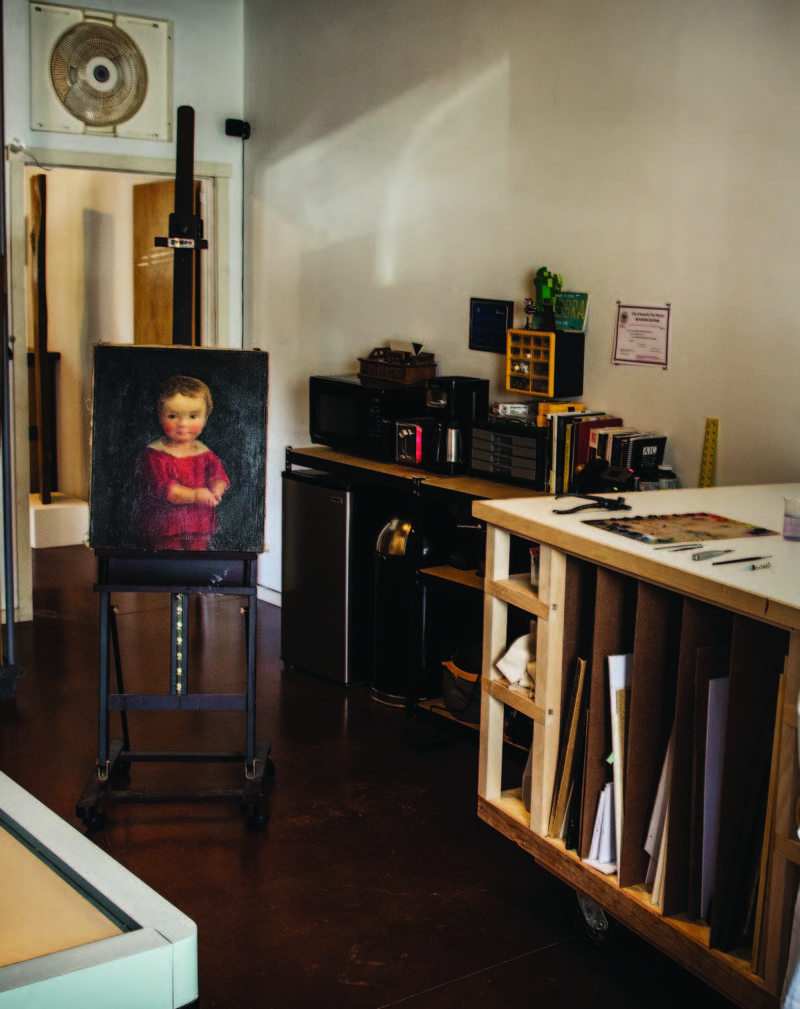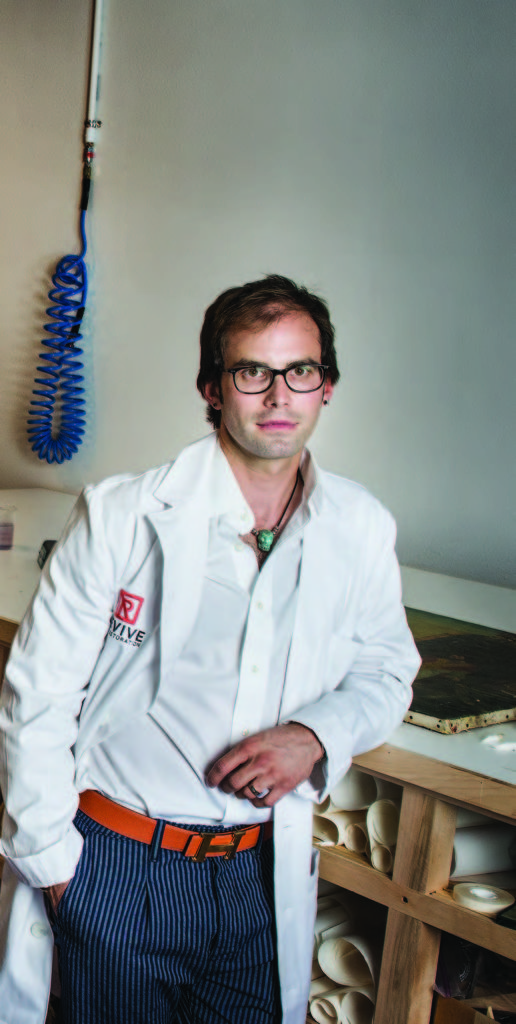 By Jordan Eddy
By Jordan Eddy
Photos by Stefan Wachs
THE Magazine, October 2016 Issue
CLEANING
When he lived in New York City, Matthew Horowitz worked for Lowy Frame and Restoring Company, a 109-year-old business that was headquartered in a brownstone on the Upper East Side. He worked as an art restorer in a studio on the top floor, with a long row of north-facing windows overlooking a historic slice of the city. “There aren’t too many tall buildings looking north from 80th Street, so you could see all these ancient water towers poking up. It was classic,” Horowitz says. Lowy is the city’s oldest and largest restoration firm, and its facilities felt like a pristine scientific laboratory. Horowitz had an apartment nearby. “I would go running in Central Park, and I’d walk downtown. I had my friends and a whole New York life,” he says. “It’s a very specific sort of experience.”
Horowitz was born in Manhattan but spent most of his childhood in Santa Fe. His family moved to the Southwest when he was five, and his father, Marty, founded Goldleaf Framemakers soon after. The fine-art framing operation is now approaching its thirtieth year in business. Horowitz, thirty-four, recently started his own entrepreneurial venture here, a one-man firm called Revive Art Restoration that’s located in the Lena Street Lofts. As he goes about his day, Horowitz routinely takes tactile leaps into the past. Time travel is his business, and the works he labors over are often windows into his personal history.
When he arrived, they handed him a mixed-media artwork by Willem de Kooning with some noticeable paint loss. His audition was to mix colors and fill in the gaps.
It’s been six years since he left his New York studio behind, but Horowitz has recaptured its feng shui in his new office. There’s an easel and swivel chair next to a north-facing window and two large tables on wheels pushed against opposite walls. Odd gadgets attached to coiled cords dangle from bare white walls, and bottles of viscous liquids line tables and shelves. “Sometimes, someone will bring in a Bierstadt or something—a classically East Coast painting—and it’ll transport me back to New York,” says Horowitz. “I’ll be really close to the canvas, and I’ll be in a certain color field, and the texture will be a certain way, and I’ll hear the radio shows we used to listen to or the voice of my old mentor.”
Horowitz is working on a large canvas by Gene Davis, which bears the vertical stripes for which the color field painter was famous. “There’s no ground. It’s a cotton canvas, and the artist has used these thin layers of what looks like Magna, which is an acrylic resin pigment,” says Horowitz. The first step is to thoroughly clean its surface using a cotton swab and a carefully selected solution. The grit that’s lodged between brushstrokes provides clues to the painting’s journey through the world: red dust might place it in New Mexico, while black soot points back East.
Cleaning the painting is a litmus test that guides Horowitz’s next steps. He chooses from an array of cleaning solutions, settling on one that removes dirt and varnish but doesn’t strip the paint. At Lowy, Horowitz worked alongside a restorer who learned how to clean paintings in Italy.
“I would be worried about choosing the wrong thing. Sometimes a chemical is fine with one color and not with another, or something goes wrong if it’s on there too long,” he says. “She taught me that it’s a sensory thing. As you clean the painting, you can feel this subtle friction of the cotton swab on the surface as different dirts and varnishes break down.”
Horowitz got his BFA at the University of New Mexico and apprenticed under Santa Fe art restorer Steven Prins, but Lowy was his true testing ground. “[Bill Santel], who’s the head of the department there, he saw something in me,” Horowitz says. “He knew I was capable of doing these things that I didn’t even know I could do, or that didn’t even seem possible.”
COLOR MATCHING
Horowitz was just twenty-four on his trip to New York to interview at Lowy. When he arrived, they handed him a mixed-media artwork by Willem de Kooning with some noticeable paint loss. His audition was to mix colors and fill in the gaps, a process called “in-painting.” The job was doubly intimidating: not only did the work bear the signature of a twentieth-century titan, but its pigment was mostly white. “Whites can be bluer or redder. They can take on the characteristics of whatever other pigments might be in there,” Horowitz says. He spent the day hunched over a palette, in search of a perfect match.
Today, Horowitz has a similar—if slightly less nerve-wracking—challenge. He’s working on a masonite panel that depicts a row of cowboys on horseback emerging from a thick fog. The piece is full of subtle shifts in white and grey, so color matching takes a careful eye. “I just try to see through the white a little bit, to figure out what’s going on,” he says, loading his brush with watercolor pigment. “When you go to match color, if it takes more than three colors to match it, then you’re probably getting too complicated.”
This is where the knowledge Horowitz has gleaned from cleaning the work comes into play. He knows what will disrupt the original paint, so he chooses a pigment for in-painting that can be removed without affecting the rest of the work. “Everything I do has to be entirely reversible,” he says. “When I’m going to touch something up, I don’t just go and get a brush full of paint.”
The Gene Davis painting sits nearby, its stripes noticeably more vibrant. It’s ready for pickup, and Horowitz keeps getting up to inspect it. He used a different type of pigment to touch it up than he’s using for the Western scene. Oftentimes, modern and contemporary works are the trickiest to restore. “The weirder the materials are, the more difficult it becomes,” Horowitz says. “A lot of conservators won’t work on more modern art, because you have to grapple with these ethical issues. I believe there’s always a middle ground that you can get to. You can say, ‘We can’t do ‘A’ because it’s just not right, but maybe we can do ‘B’ or ‘C.’”
The de Kooning was the first of many grueling assignments Horowitz worked on at Lowy. “I got the job, and suddenly I was working on art by Dalí and Picasso and Degas,” Horowitz says. “I don’t know how many times I had that Yoda situation there, where my mentor would be like, ‘You can do this.’ I’d work on it all day, and he would be like, ‘It’s not there yet, but it can be done.’ He believed in me, so there was this jump when I could say, ‘If he can do it, I can do it.’”
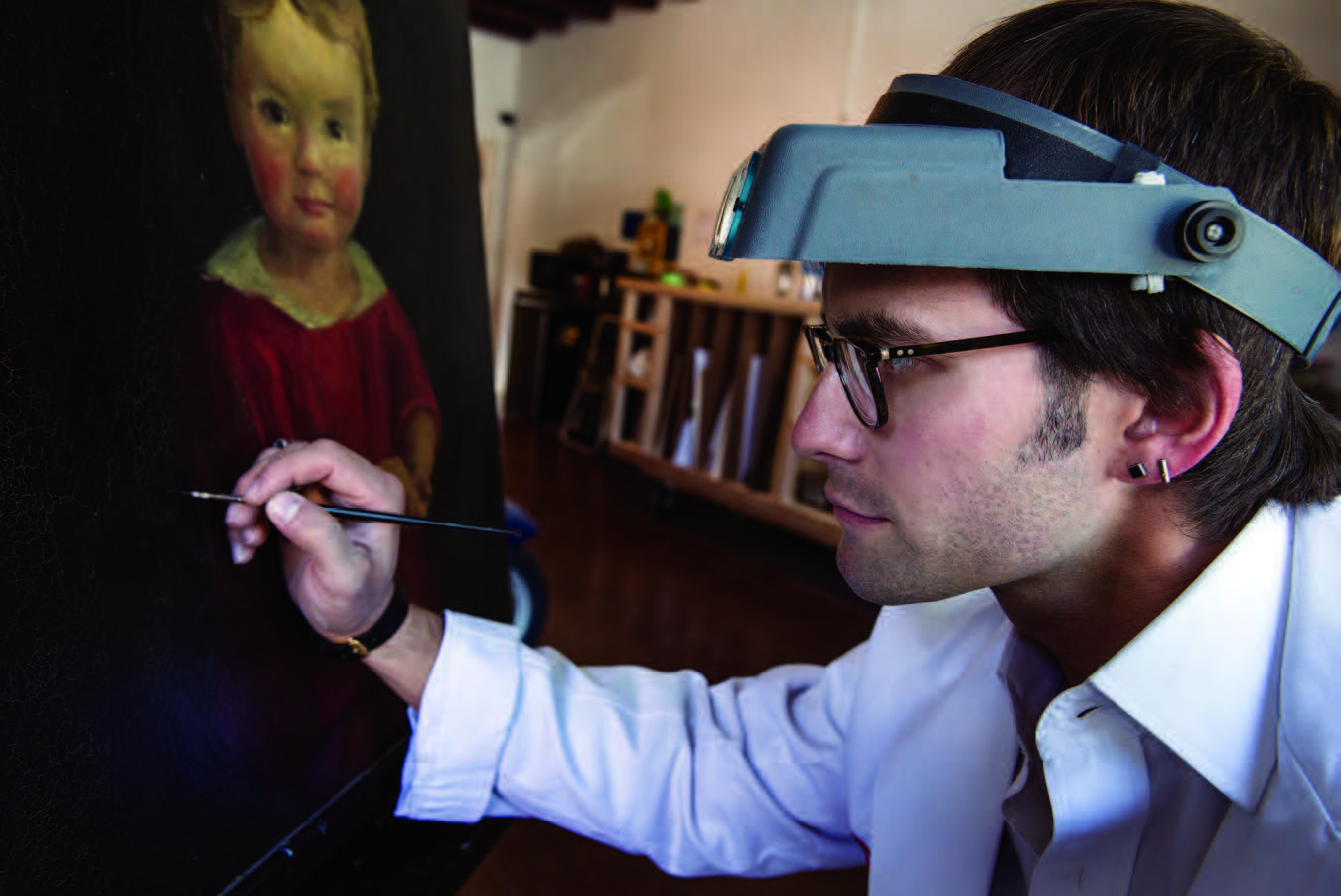
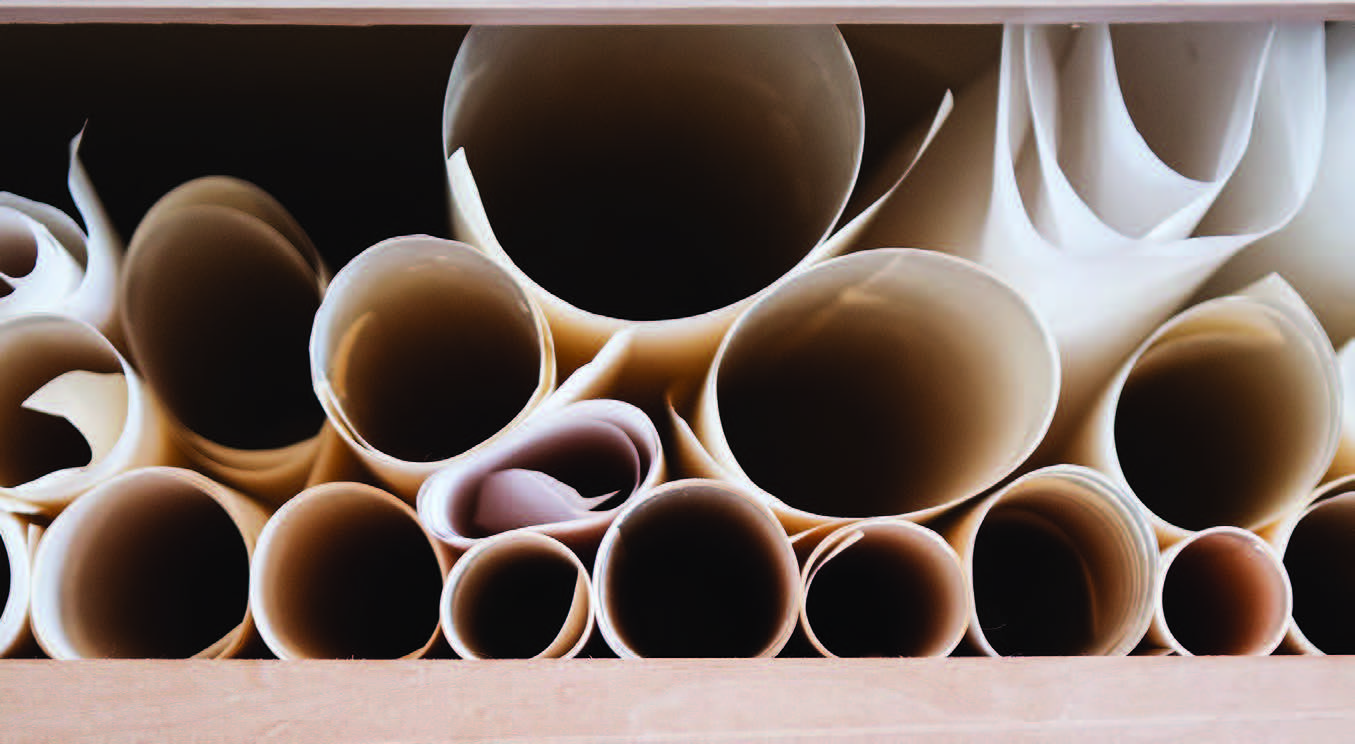
Four years later, just before Horowitz moved out of New York, he scheduled an appointment at one of the best tattoo parlors in the East Village. He’d made hundreds of drawings of a skeleton key, and wanted a permanent version on his forearm. Throughout his time in New York, Horowitz returned to Santa Fe every year to help build Zozobra. It was a two-week working vacation, a cross between summer camp and Burning Man that brought him back into the Santa Fe fold. “When I was in Santa Fe, it felt like I lived here. Then I’d get back to New York, and I’d go into my apartment and say, ‘Oh yeah, this is where I live,’” Horowitz says. “Once I had established that New York was part of my identity, that it would always feel like home, I realized I could carry it with me back here.” The tattoo would be his key to the city, a reminder that giving up his apartment in New York didn’t mean he was leaving behind the identity he’d established there.
“I was talking the tattoo guy’s ear off the whole time, like, ‘What’s it like to be a tattoo artist? What sort of artistic medium could I compare it to?’” Horowitz says. “It turns out it’s really similar to what I do with in-painting. You have to load the gun with just the right amount of pigment and mixtures of everything. If you go too deep, you can scar somebody. If you go too light, it doesn’t look right. You have to know just how to move, how to make a mark. You could tell this guy did it all the time. It was like Fred Astaire dancing, really beautiful.” Not long after, Horowitz sat on the floor of his empty New York apartment and wept. Despite his new, permanent memento, leaving the city behind was heartbreaking.
TEAR REPAIR
One day in Santa Fe, just a few months ago, Horowitz dialed up a friend who owns a local mortuary and inquired about their hearses. He’d been laboring over a business plan for Revive Art Restoration, and a quirky art delivery vehicle seemed like the missing piece. Now a purple hearse sits behind Revive’s office, with stylized “R” decals on the front doors. “It works on so many levels,” he says. “It’s the perfect size for moving art, and the reason hearses are luxury cars is that they’re supposed to honor your loved one. I want to honor your artwork like that and bring it back to life.”
Upon returning to the Southwest, Horowitz opened a restoration wing of Goldleaf Framemakers. The recession had hit Santa Fe’s art market hard, and Horowitz helped pull his father’s business through some of the toughest years. “It was wonderful working with my family, and I built relationships with clients and learned how all of that stuff runs,” says Horowitz. As the economy stabilized, he dreamed of starting his own operation. “Goldleaf is a really awesome thing that my dad built, that I respect and admire. It’s totally rock-and-roll and cool, but after a certain period of time, I said, ‘If it were me, I would do it this way.’”
Horowitz opened Revive in April, and he had a very clear vision for it. “I saw these clean, white walls. I’m wearing a nice Italian suit and tie and my lab coat, and everything’s really inviting and friendly,” he says. “It’s kind of like being a doctor in a certain way, because people care about their paintings like they’re loved ones. There needed to be a sense of comfort.” Some of the final details are a bit different: Horowitz is wearing a Zozobra t-shirt (he’s now the chairman of the famous puppet’s construction committee and the new president of the Kiwanis Club), and there’s a motorized scooter parked in the middle of the studio. Still, the walls are white, the studio is tidy, and there’s a comfy waiting room impeccably decorated by Horowitz’s wife, Hayley.
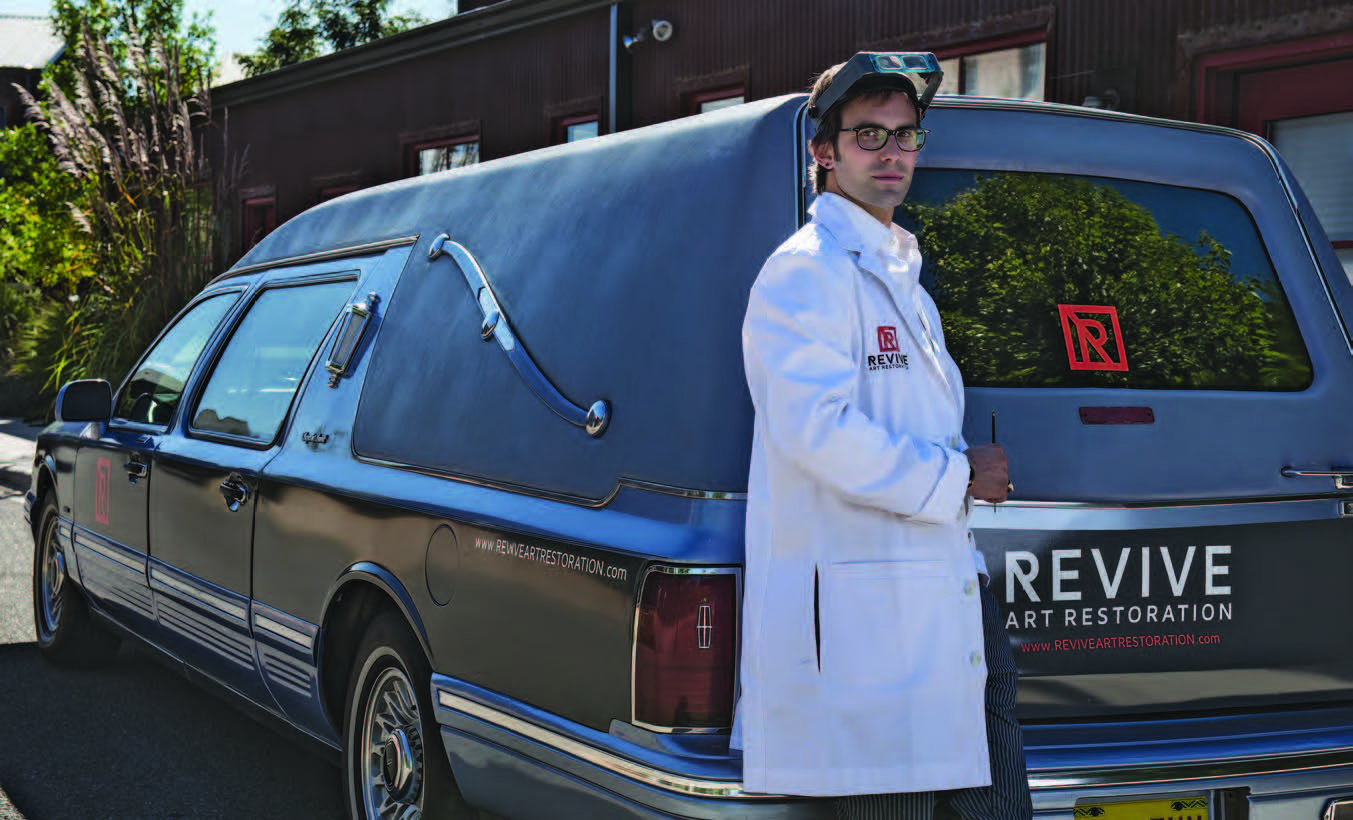
As a young, sociable man in a field known for the ancient and bookish, Horowitz has always kept a careful eye on clients’ perceptions of him. “I’ve felt in the past that I have to convince people I can do this,” he says. “I’m not your average conservator, but I do good work and stand by my timelines.” Opening Revive has taught him that breaking conventions is marketable. Hence the edgy branding and the car that’s straight out of Ghostbusters. “In the end, the work speaks for itself,” Horowitz says. “Who cares if I drive around in a hearse?”
The last round of artworks has departed, clearing space for new projects. Horowitz has arranged several paintings across one of his tables and is in the midst of patching rips across their faces. “There’s different ways we tackle tears,” he says, flipping over the smallest canvas. “In this case, I’ve done a bond with some special conservation epoxy.” The back of the canvas is adorned with shiny spots that look like scar tissue. The patched tears are already almost invisible on the front, and Horowitz will fully conceal them with some final touchups.
“The trickiest thing is reweaving canvas. This is very brittle, so there wasn’t really anything to reweave, because it’s falling apart,” says Horowitz. “When you have something that’s more pliable with loose threads, you actually go in with tweezers and weave it back together.” For larger holes, he’ll fill the gaps with gesso and carve it to match the texture. “There’s color, sheen, and texture to consider,” he says. “Part of concealing something is looking at the way light grazes the surface of the piece.”
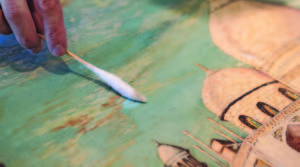 For many of the treasures that he works on, Horowitz isn’t trying to make the art look new. “This is an old Spanish Colonial–type piece that has been in a New Mexican family for a couple of generations,” he says, picking up a well worn canvas and examining some paint loss along the bottom edge. “It’s not a museum piece; it’s kind of primitive, but it’s really, really important to somebody,” Horowitz says. “I won’t clean it to the point where it looks like it was painted yesterday. There’s some character that honestly makes it more interesting.” He’ll always straddle that line between innovation and tradition. For Horowitz, navigating the future of his business is all about staring deep into the past.
For many of the treasures that he works on, Horowitz isn’t trying to make the art look new. “This is an old Spanish Colonial–type piece that has been in a New Mexican family for a couple of generations,” he says, picking up a well worn canvas and examining some paint loss along the bottom edge. “It’s not a museum piece; it’s kind of primitive, but it’s really, really important to somebody,” Horowitz says. “I won’t clean it to the point where it looks like it was painted yesterday. There’s some character that honestly makes it more interesting.” He’ll always straddle that line between innovation and tradition. For Horowitz, navigating the future of his business is all about staring deep into the past.
